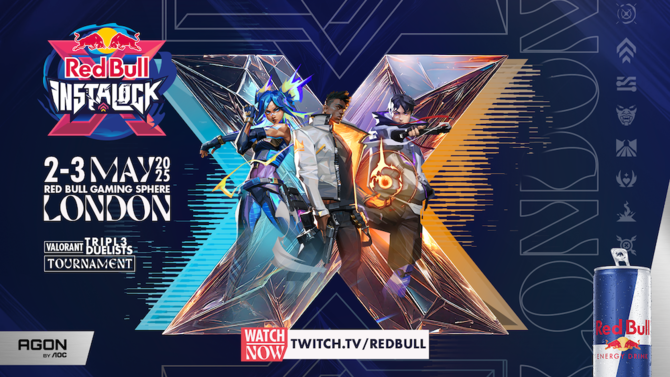LONDON: The four teams to compete at Red Bull Instalock, the professional women’s Valorant invitational tournament, have been revealed, with Saudi team Falcons Vega taking their place alongside reigning Red Bull Instalock champions G2 Gozen, FlyQuest RED, and GiantX GC at London’s Red Bull Gaming Sphere on May 2-3.
Inaugural Red Bull Instalock champions and German electronic sports team G2 Gozen will return to defend their title, alongside British team GiantX GC, who will try to win the tournament on home soil. Falcons Vega, winners of the 2024 Saudi Women’s eLeague Championship, will be making their Red Bull Instalock debut, joined by American e-sports team, FlyQuest RED.
Building on the success of its first tournament in 2024, Red Bull Instalock retains its unique format. Switching up the traditional Valorant team composition, teams will be required to select three duelists, the game’s offensive class guaranteeing intense plays, tactical expertise and clutch skills.
The tournament will be broadcast live from London’s premier gaming and e-sports venue in Shoreditch and will feature a creator exhibition match as part of the event.
E-sports organisation Fnatic, which became a Red Bull partnered team in January, will also be supporting Red Bull Instalock, hosting the Official Watch Party at its headquarters in Dalston, London on Saturday, May 3. In the collaboration with Fnatic the London-based e-sports organisation will develop exclusive merchandise to celebrate the event.
Ahead of the tournament, Red Bull player Michaela “Mimi” Lintrup, member of G2 Gozen and reigning Red Bull Instalock champion, said: “It’s great to see Red Bull Instalock back for another year as a huge moment for the Game Changers calendar. I can’t wait to return to London and to defend our title against some of the most amazing teams from around the world.”
Red Bull Instalock will be broadcast live on Red Bull’s Twitch and YouTube channels.






















